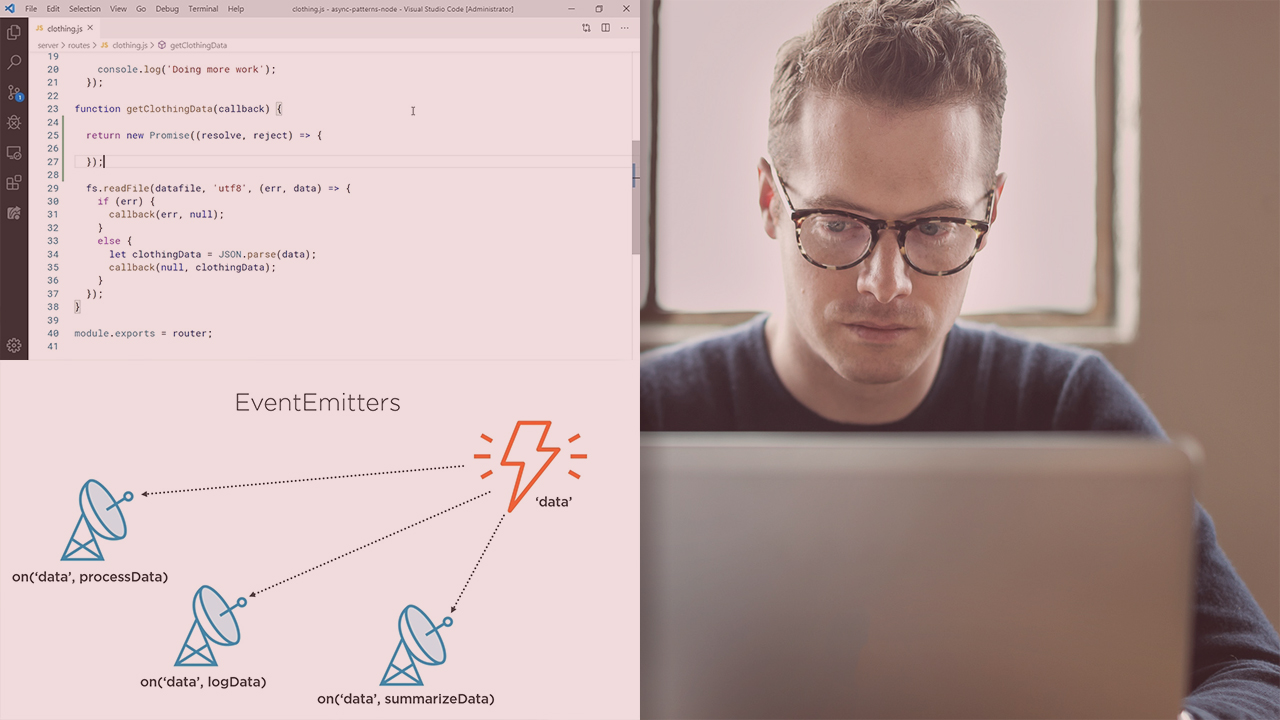- Course
Async Patterns in Node.js 12
Node.js is built from the ground up to support asynchronous coding patterns. This course will teach you multiple techniques for writing modern, asynchronous JavaScript that helps you deliver fast and responsive Node applications.

- Course
Async Patterns in Node.js 12
Node.js is built from the ground up to support asynchronous coding patterns. This course will teach you multiple techniques for writing modern, asynchronous JavaScript that helps you deliver fast and responsive Node applications.
Get started today
Access this course and other top-rated tech content with one of our business plans.
Try this course for free
Access this course and other top-rated tech content with one of our individual plans.
This course is included in the libraries shown below:
- Core Tech
What you'll learn
Node.js was built to run on a single thread using non-blocking I/O calls. Building apps for this environment requires extensive use of asynchronous code. In this course, Async Patterns in Node.js, you'll learn multiple techniques to write efficient asynchronous code using modern JavaScript. First, you’ll explore how the Node event loop works and how to write asynchronous code with callbacks that adhere to conventions followed in the Node community. Next, you’ll discover how to use Promises and the async/await keywords to write asynchronous code that’s easier to read. Finally, you’ll learn how to write event-driven code with EventEmitters and use worker threads to tackle CPU-intensive tasks in your Node apps. When you’re finished with this course, you’ll have the skills and knowledge of asynchronous programming necessary to build performant Node apps using accepted best practices.

